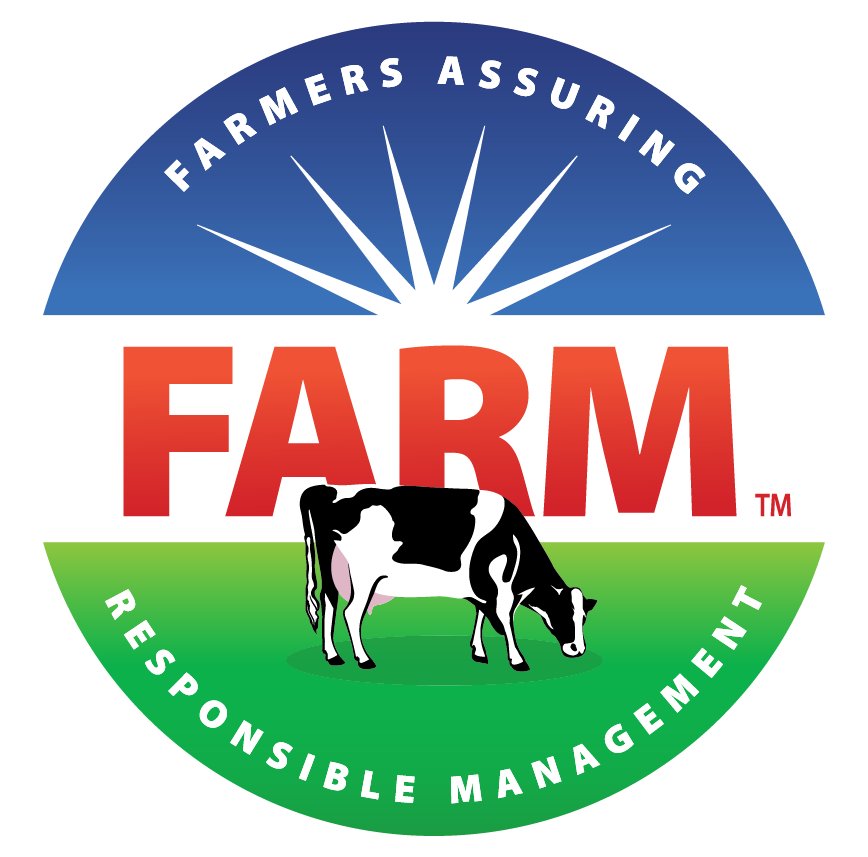We hope you’re ringing in the New Year tonight with family and friends. Here’s what the National Dairy FARM (Farmers Assuring Responsible Management) Program is looking forward to in 2016.
10. Reaching 100 percent participation (or as close to it as possible): This year, the FARM Program increased participation from 75 percent to almost 94 percent of the milk supply enrolled in the program. In 2016, we’re going to get close to 100 percent, we just know it! From coast to coast, we’ll be able to say that the entire dairy industry has one program for animal care. United we stand.
9. More farmer resources: We know that we’ve focused a lot of the program on getting co-ops and processors the information and training needed to implement FARM. But in 2016, that all changes, as we’re going to focus on our farmers. We’re excited about the new series of webinars and other training modules we’re launching in just a few weeks. Stay tuned!
8. More staff to help answer your questions: We’ve added to our FARM Program team here at NMPF, and in 2016 there will be even more folks on hand to help answer questions. We couldn’t be more jazzed to have extra hands on deck. Just email dairyfarm@nmpf.org and we will get back to you quickly!
7. Innovative collaborations with Dairy Management, Inc. & the Innovation Center for U.S. Dairy: While we already work very closely together, in 2016 be prepared for even more coordinated messaging and projects connecting animal care, consumer confidence and the FARM Program.
6. More Food Chain Outreach: In 2015 we built relationships with some of the largest restaurants and retailers in the U.S. (and the world!), but we’re not stopping there. In 2016, we’re going to make sure that every retailer, restaurant and food company knows how passionate dairy producers—and the entire dairy community—are about animal care.
5. Better data analysis: Since 2009 (when the FARM Program began), we’ve been collecting data from all of our participating dairy farms—data that tells a great story about how producers care for their animals. In 2016, we’re going to improve how we use this data to share the story of top-notch care on our nation’s dairies through increased analysis and fancy, zippy graphics.
4. Building the FARM Brand: This year we launched our brand new FARM Program website (be sure to bookmark the page so you don’t miss any updates!) and our new FARM Proud blog. In 2016 we’ll continue to push out and drive consumers to our website to learn more about the program and our producers’ commitment to animal care.
3. More Training and Education for Evaluators: Our second-party FARM evaluators are critical to the FARM Program. This year, we’re going to hold at least three trainings for our evaluators — both new and old — to attend, and an end-of-year conference for networking and learning. Be sure to check our training page for updates on these opportunities!
2. Version 3.0 of the FARM Program: Every three years the FARM Program undergoes an intensive update to make sure we’re continuously improving. In 2016 we will roll out Version 3.0 of the program and couldn’t be more excited. If you want to see what changes are being considered, click here.
1. And last, but certainly not least, the number ONE thing we’re looking forward to in 2016 is working with you—our producers, co-ops, second-party evaluators and processors to tell your stories about FARM and animal care. We’ve launched our new Twitter, Facebook and Instagram to help amplify your voices on this important subject!
We can’t wait to see what 2016 has in store for us at the FARM Program, but by all accounts it is shaping up to be an incredible year. We certainly couldn’t have celebrated the successes we have this year without all of you who help make this program possible, so for that we’d like to raise a glass to you tonight and say a heartfelt thanks!
Happy New Year!
